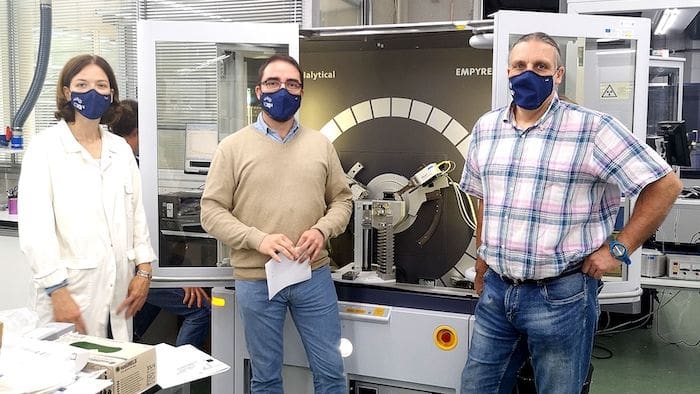Crysforma’s new service: Study of hydrates with our new multipurpose X-Ray diffractometer
Pharmaceutical compounds may crystallize in multiple crystalline forms, either solvent-free (anhydrous) or containing a solvent in the crystalline structure (solvates). A particular case of solvates are hydrates, which incorporate water molecules in the crystal lattice. They are specifically important as:
- The innocuity of water makes hydrates good candidates to formulate and be administered
- Water is present everywhere (atmosphere and other excipients used in formulations of drugs), so an undesired hydrate can appear unexpectedly
Since the physicochemical properties may differ between the anhydrous and hydrated forms, it is important to study the hydration/dehydration processes to know the stability ranges and the risk of transformations during development, production, storage, and commercialization to avoid any undesired form change.
The newly acquired Malvern-Panalytical Empyrean multipurpose X-Ray diffractometer in combination with the already available Dynamic Vapour Sorption equipment (DVS) allows determining the temperature and relative humidity conditions that induce transformations between anhydrous and hydrated forms.
The new diffractometer is equipped with a CHC plus+ chamber by Anton Paar that allows controlling the temperature and the relative humidity of the sample. Thus, transformations induced by any of these two parameters can be monitored in situ by Powder X-Ray Diffraction analysis (PXRD). This valuable information together with a DVS analysis, which is a gravimetric technique that measures the amount of water against the temperature and relative humidity, makes the perfect combination to study transformations induced by the water activity of the medium.
Related news

Let's create a brighter future
Join our team to work with renowned researchers, tackle groundbreaking
projects and contribute to meaningful scientific advancements








 13-03-2024
13-03-2024 


















